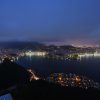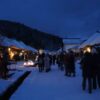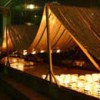Go Out into the Night City and Search for Lighting Heroes and Villains!
2018/07/26 Noriko Higashi + Leon Hitsu + Hikaru Kimura + Yuri Araki + Shosaku Takahashi + Aiko Kanda
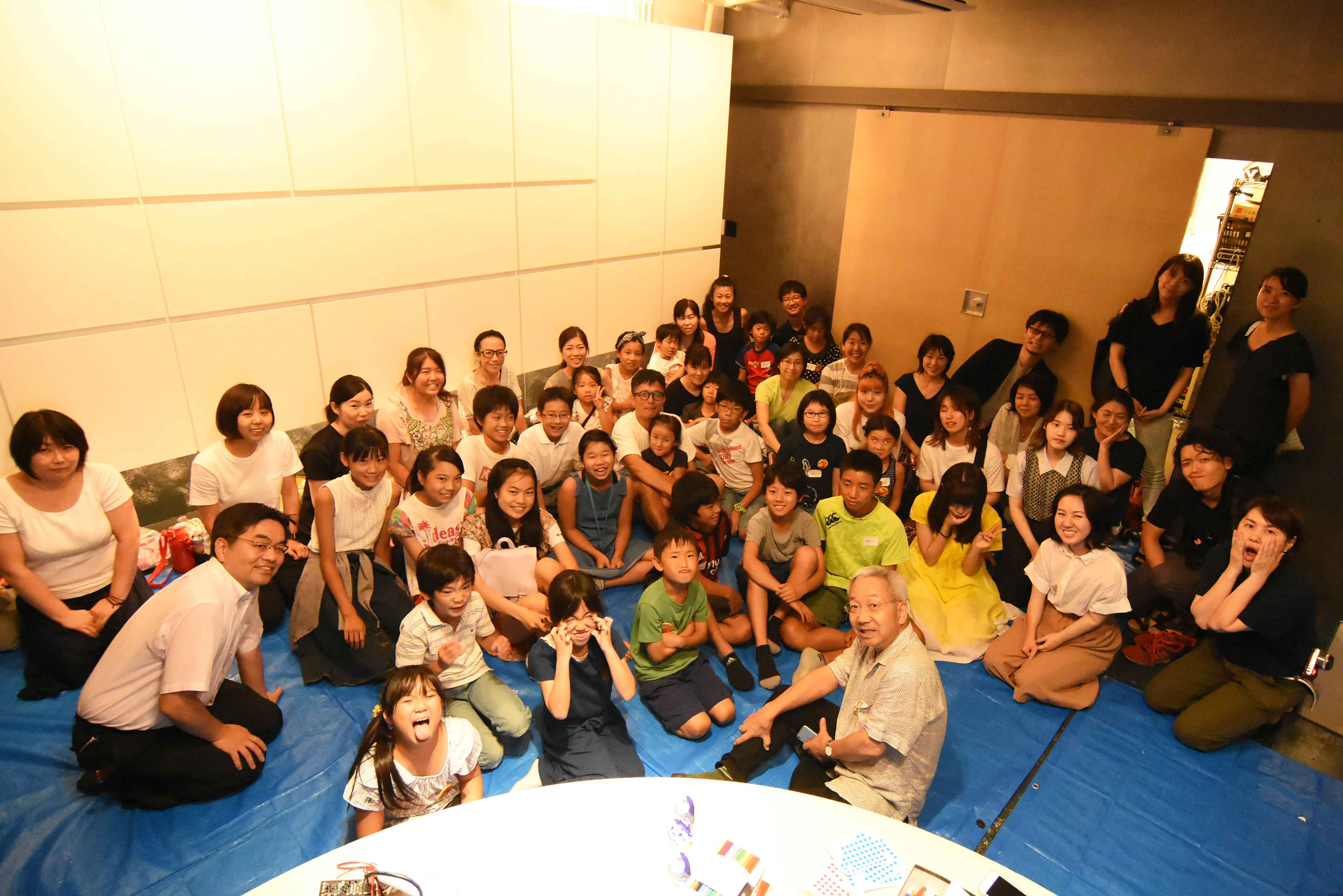
It was a lively workshop with a total of 49 participants
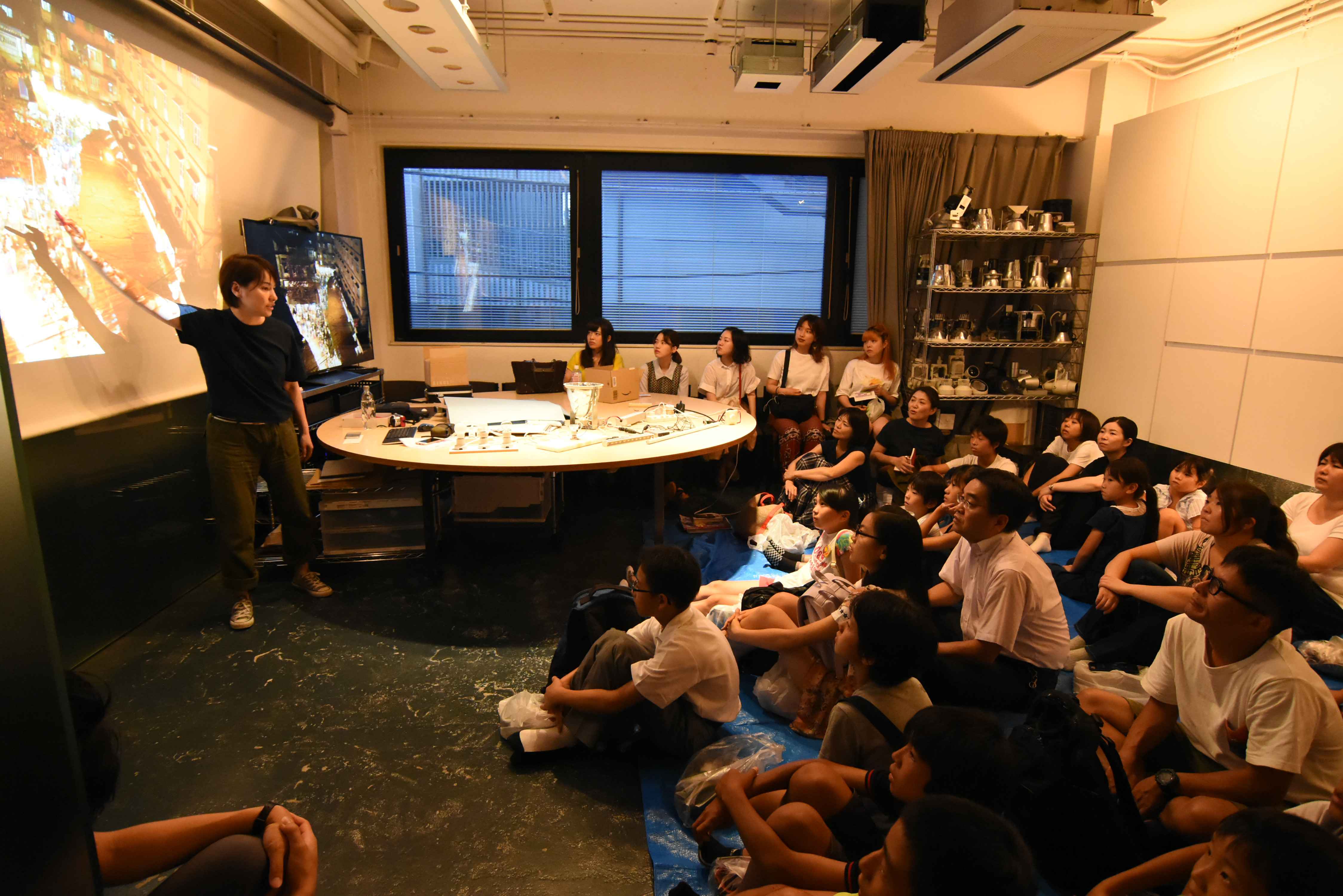 A Look at the Orientation
A Look at the Orientation
We recently held a Lighting Detectives Jr. workshop for the first time in a while in Tokyo’s record-breaking summer heat. 24 energetic children and their guardians searched for lighting heroes and villains around Omotesando and Cat Street.
The LPA conference room was filled with children in late July, just as summer vacation began. The Night Walk Survey workshop was held for the first time in three years, and 24 children, ranging from first graders to ninth graders, gathered, even though the capacity was only 15.
The staff discussed how to get children, who don’t usually think about lighting, interested and what lessons they should take away. The workshop targeted the following goals:
- Learn about light
- Observe the town’s lights
- Search for lighting heroes and villains
- Consider why something is a hero OR a villain
- Exchange opinions on what others thought
- Think about how to improve a villain
■Orientation
First, chief Mende explained the basics of lighting. He offered a simple breakdown of the history of lighting, starting with fire, the impact of different color temperatures on people, and the differences in lighting placement between homes in Japan and abroad. Following that, he introduced the participants to the elements that make up a city’s lighting and explained what constitutes a lighting hero and villain before the group set off for the walk.
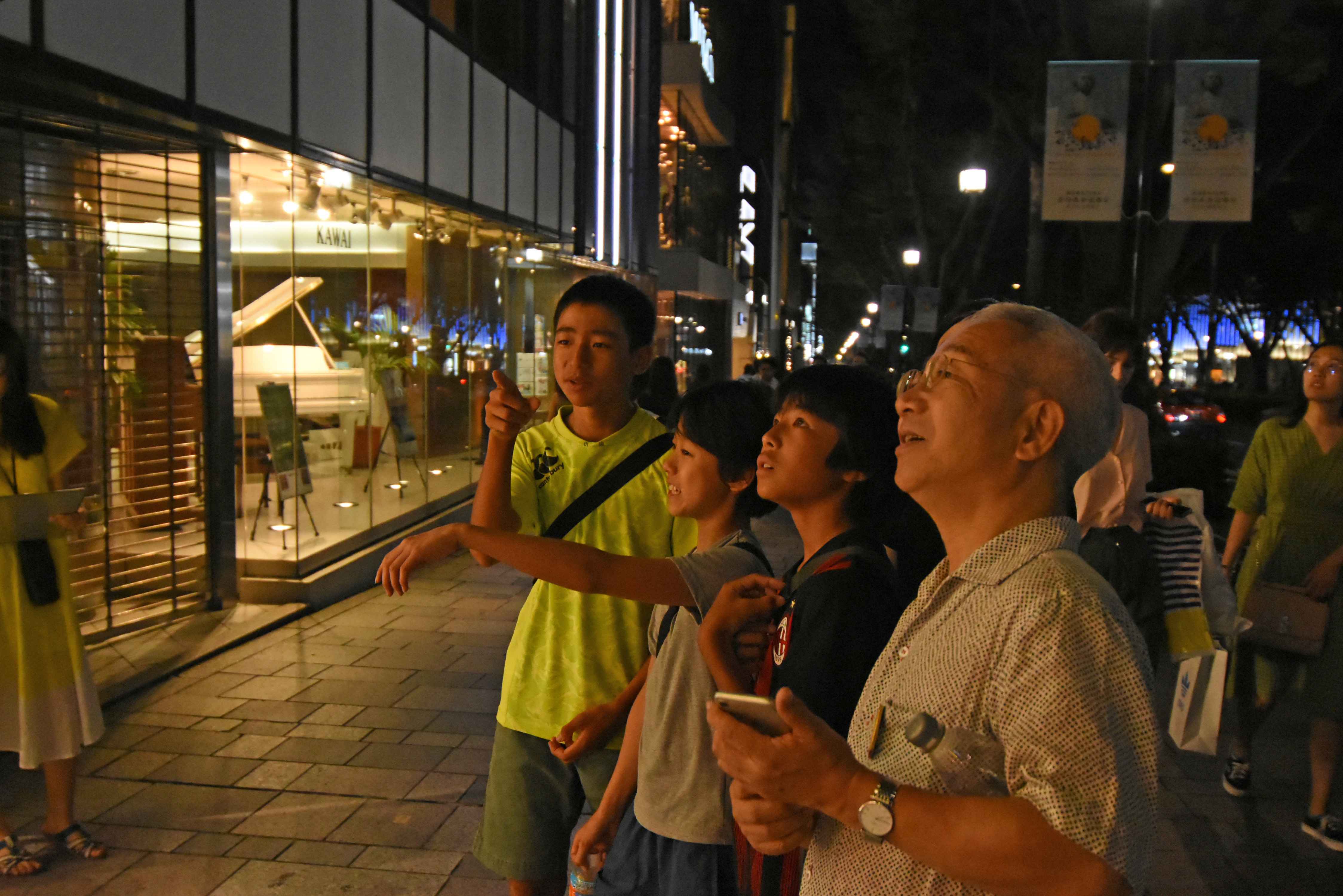 Children sharing their opinions during the Night Walk Survey
Children sharing their opinions during the Night Walk Survey
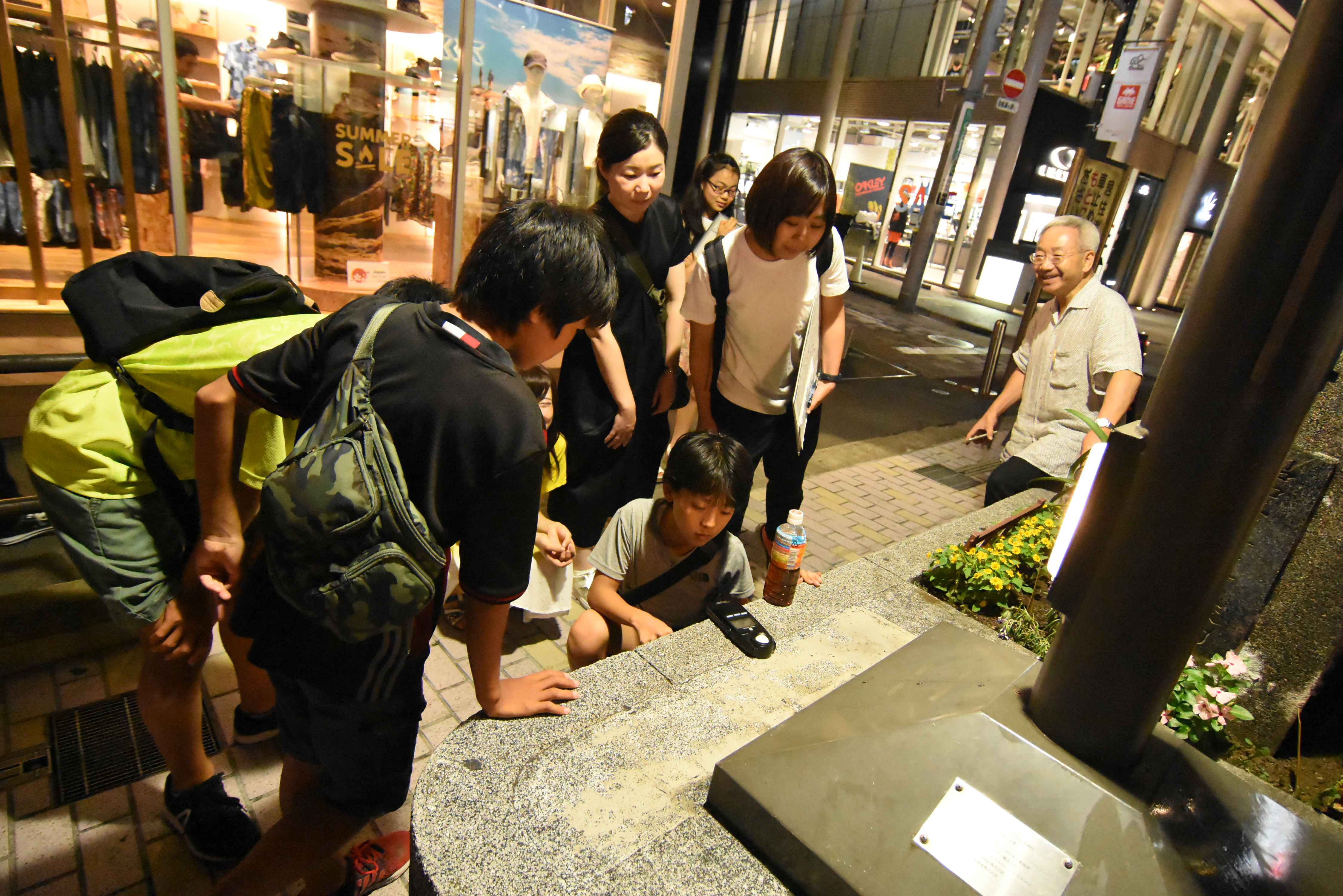 Measurement of the illuminance along the roadside
Measurement of the illuminance along the roadside
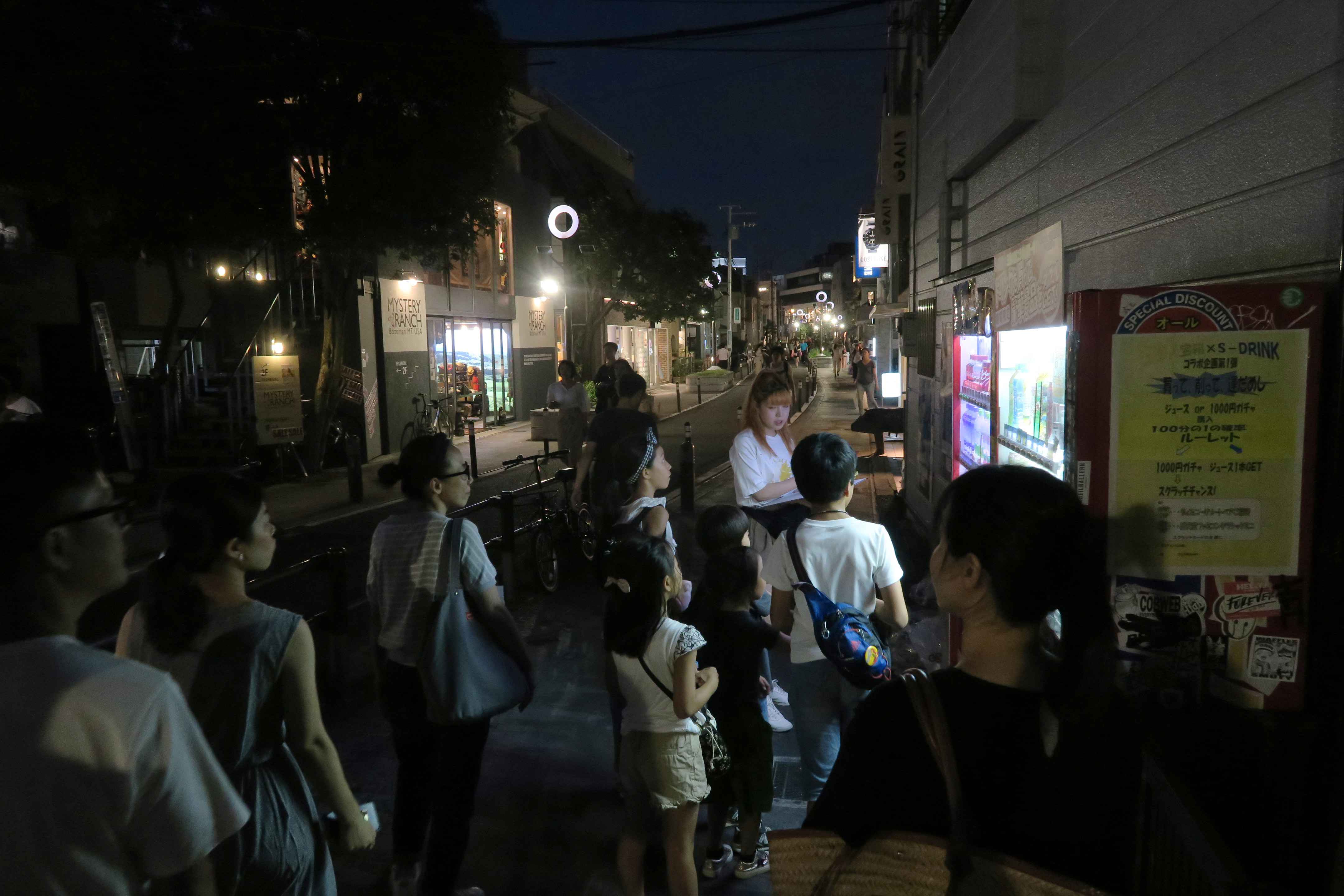 We discovered that even two side-by-side vending machines have a different sales appeal when the lighting is different
We discovered that even two side-by-side vending machines have a different sales appeal when the lighting is different
■Night Walk
The children were divided into five teams, and each team started searching for heroes and villains.
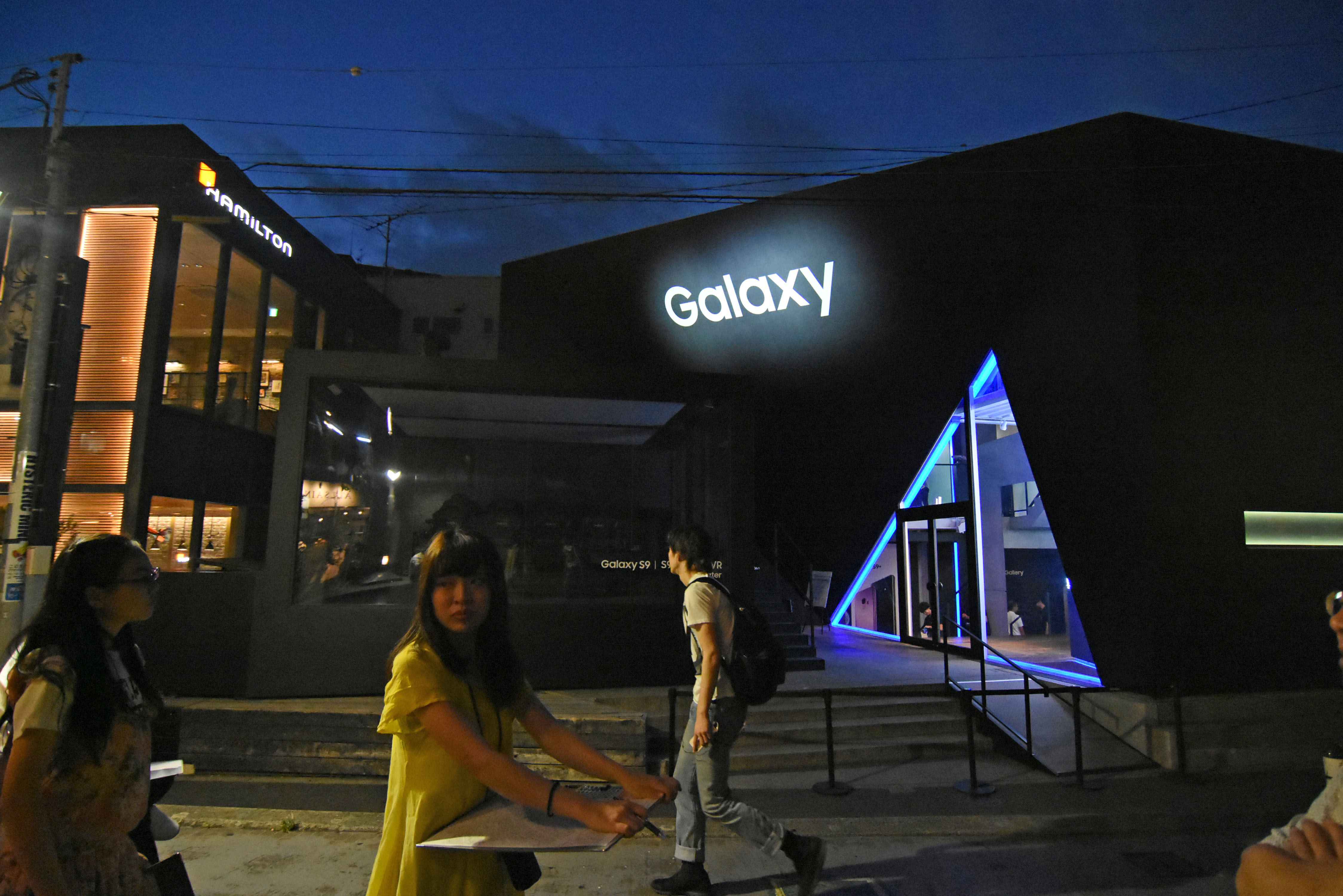 The lighting that makes the sign stand out, which was cited as a hero by many teams
The lighting that makes the sign stand out, which was cited as a hero by many teams 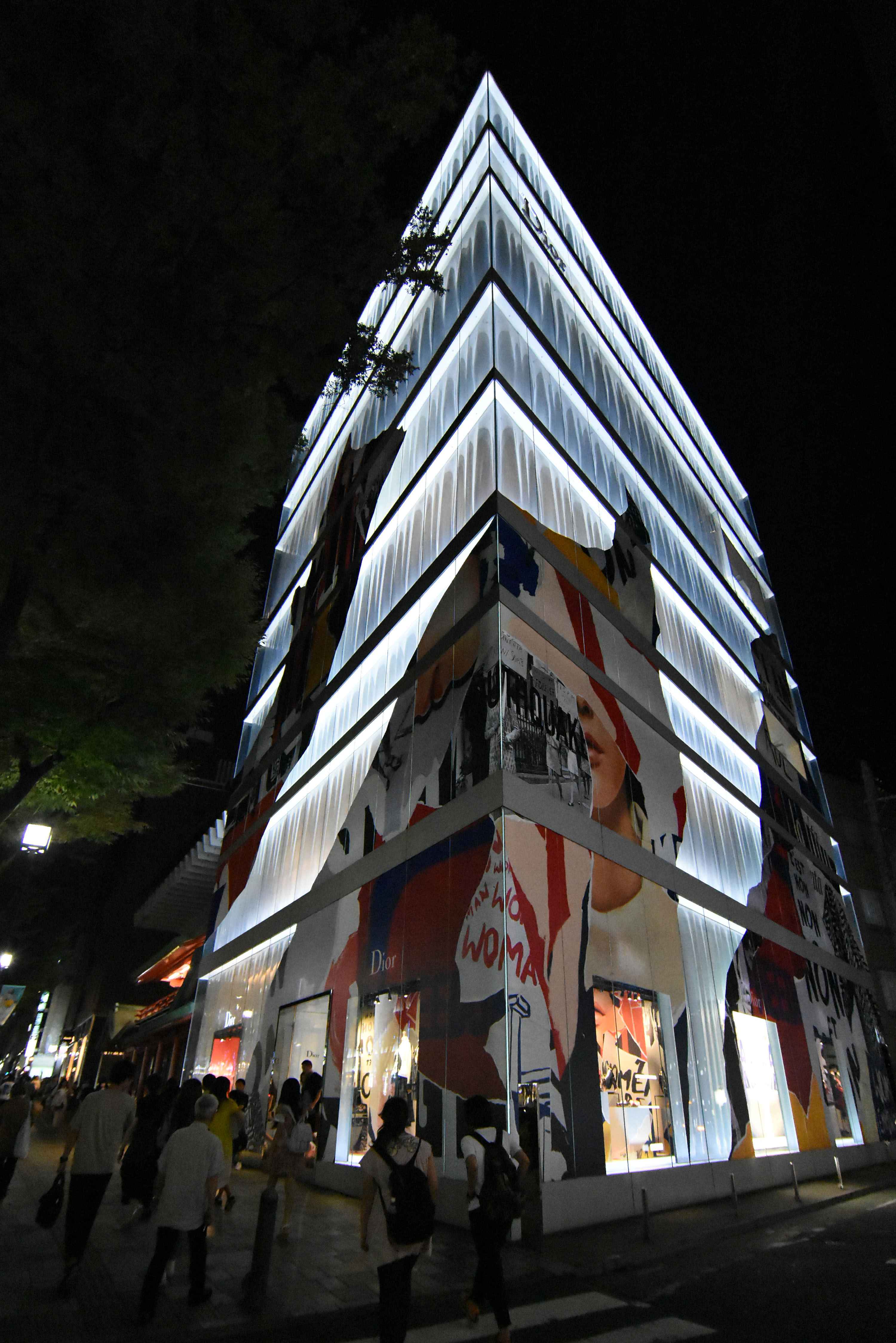 The visual effect of light flowing down like droplets received positive feedback
The visual effect of light flowing down like droplets received positive feedback 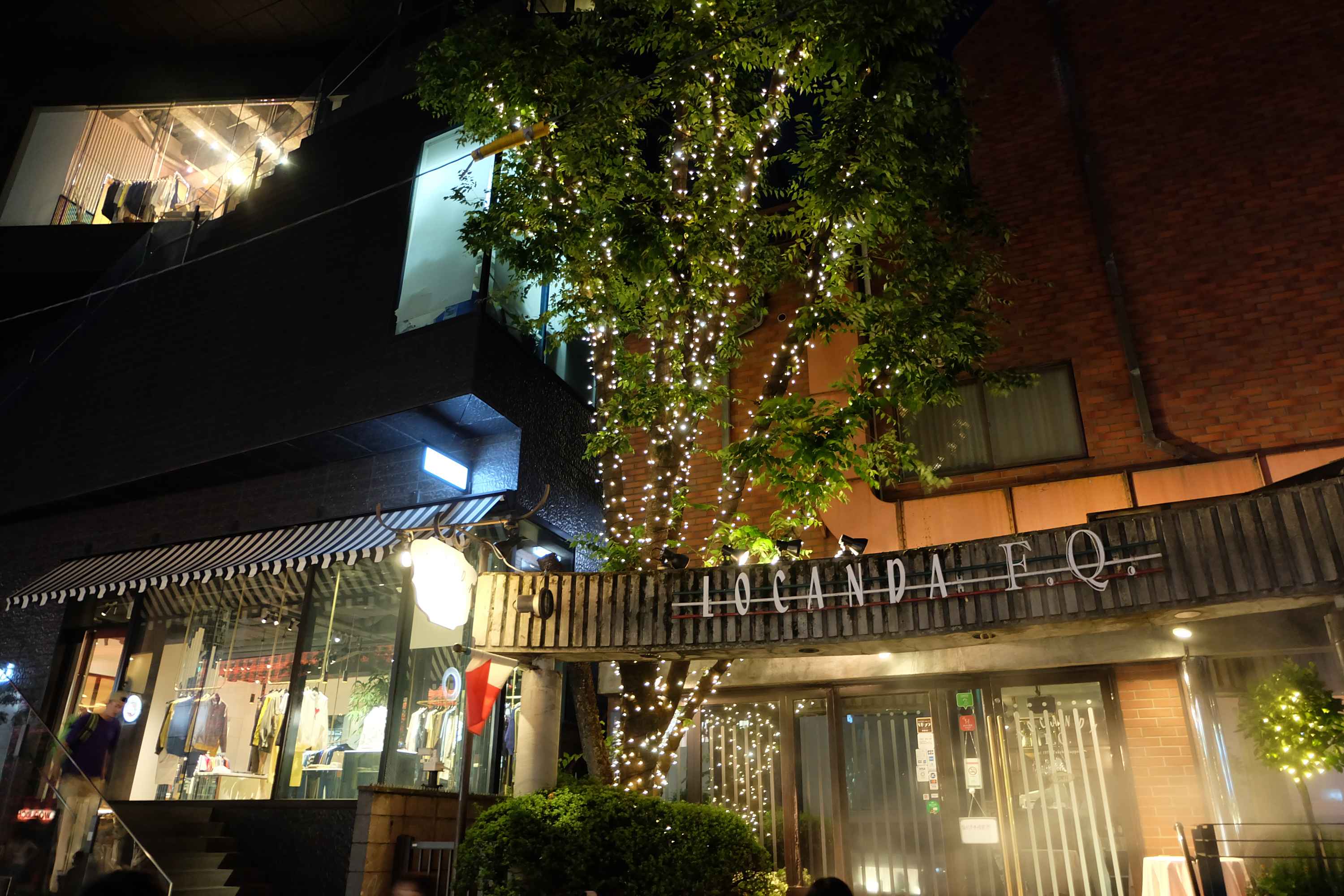 The modest and elegant tree illumination was chosen as a hero
The modest and elegant tree illumination was chosen as a hero 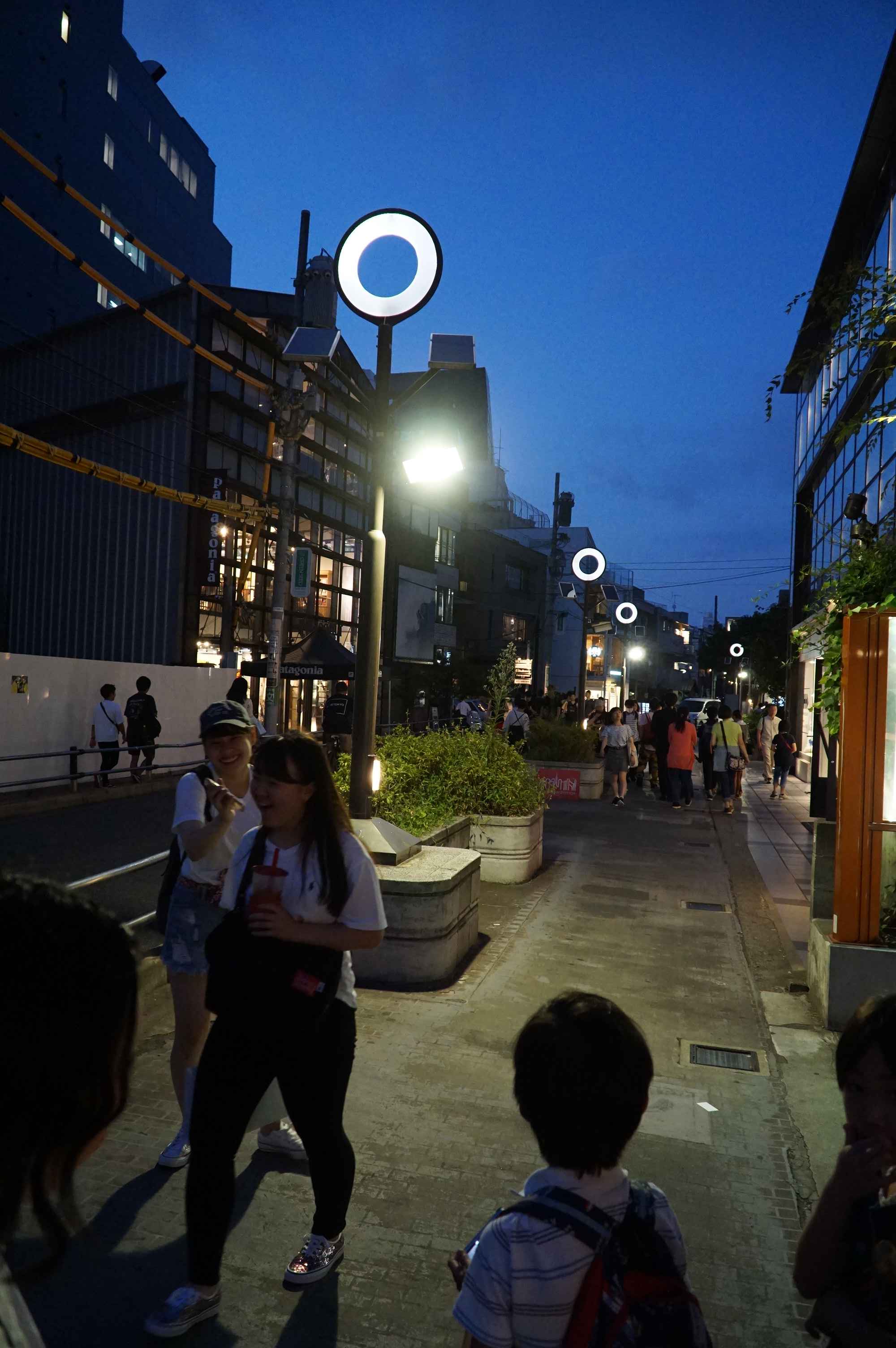 It was chosen as a villain because the soft light from above was ruined by the intense glare from below
It was chosen as a villain because the soft light from above was ruined by the intense glare from below 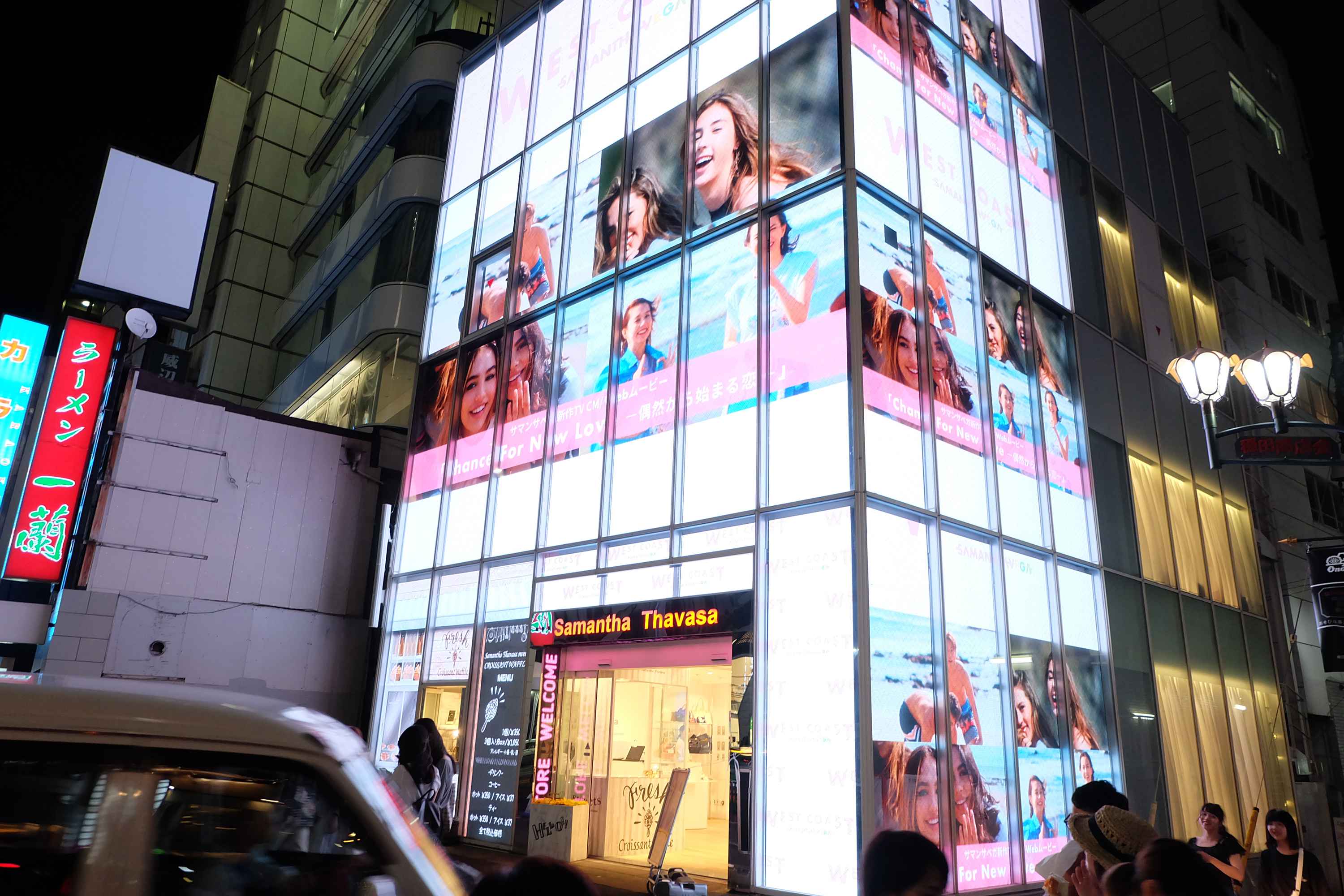 The entire building facade is glowing and is so dazzling that it was chosen as a villain
The entire building facade is glowing and is so dazzling that it was chosen as a villain 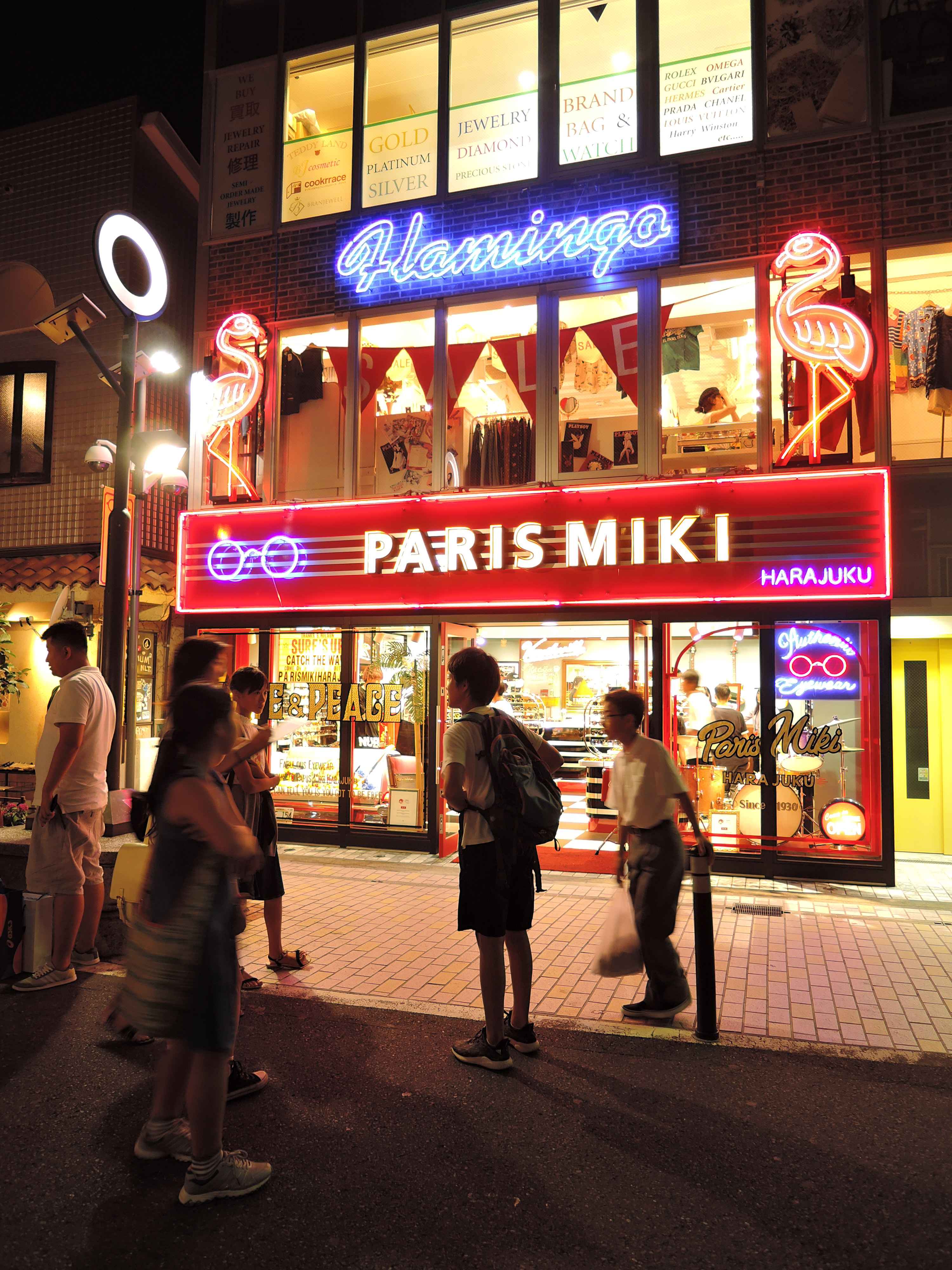 Neon signs that divided opinions between hero and villain
Neon signs that divided opinions between hero and villain
① Team A
Team A consisted entirely of children from the lower elementary grades. Opinions like pure “like” or “dislike” flew around for everything they saw. The children’s method of observation was to rush straight to anything that caught their interest, observing it intently and sometimes touching it while giving their opinions.
The top hero chosen by Team A was a café sign that changed colors. While there were other colored lights, this one was designed so that the wall behind the sign was illuminated and the cutout letters were translucent. Comments included, “It’s fun because it changes colors,” and “It’s stylish.” Other heroes were chosen based on the mature opinion that things like white, surface-emitting signs and gaslight-style streetlights were “easy on the eyes.” Most of the items chosen as villains were direct light sources. Signs with many exposed light bulbs, let alone glaring spotlights, were immediately dismissed as “disliked” by the children.
What I realized while walking with the children was this: adults, based on experience, predict glare and turn away, but children approach to observe and voice their opinions based on what they feel in the moment. I was humbled to realize that as an adult, I have become accustomed to ignoring the lighting villains that flood the city.(Hikaru Kimura)
②Team B
Team B’s Night Walk Survey centered around the keywords “sparkly and dazzling.” The top hero chosen was the tree illumination at a restaurant entrance. Although it was illumination, it was not flashy. Its warm-white color and small lights gave it an elegant impression, and it was unanimously chosen as a hero for matching the street’s aesthetic.
Sign lighting that used indirect lighting was also highly rated, and the opinion that calm lighting suits Cat Street was often heard. However, there was one item that sharply divided opinions: a shop’s facade lighting adorned with colorful neon tubes. It was certainly not calm lighting, using many vibrant colors like red and pink. The conflicting opinions—some liked the lively light, while others felt it did not suit Cat Street—resulted in a deadlock, and we ran out of time before a decision could be made. Red lights used in road studs and sign lighting were chosen as a villain by many who found them to be eerie and frightening. (Yuri Araki)
③Team C
Team C consisted entirely of junior high students, making them the oldest group. They were notably calm while the other teams were rowdy—a demeanor expected of junior high students. The first place they stopped was a pole light with a donut-shaped light guide panel on top, and a glaring light fixture underneath that illuminated the road. The children commented that the glaring light below was ruining the effect of the donut-shaped light above. They also offered the sharp opinion that the lower light didn’t need to be so bright because the surrounding shops already provided ample light.
As they continued, an architecture by Tadao Ando caught their attention. The stylish look of the black exterior combined with the white glowing “GALAXY” text and blue light lines was popular with the children. The Dior Omotesando building was highly praised for its beautiful facade, which looked like dripping light droplets, making it the top hero. Since many of the members came from the Ito Juku school, many of the children were interested in architecture and light as a set. All the lights chosen as heroes were those that harmonized with the architecture. Conversely, sign lighting and interior lighting that were too assertive with their light were named as villains. (Shosaku Takahashi)
④Team D
In Team D, everyone actively gave many opinions on a single light fixture. Led by the older children, they discussed many types of lighting by comparing them, including not only the lights of shops and streetlights on the path they were walking, but also lights in less noticeable places, such as a room inside a building or the staircase lighting of a very distant building. While there was consensus that glaringly bright lighting was a villain, opinions often differed between the girls and boys, and their disagreements remained even after discussion. (Aiko Kanda)
⑤Team E
Team E was the youngest group, and they were lively, energetic, and active throughout the entire walk. The younger the children were, the more they clearly stated their opinions and showed great curiosity about different kinds of light. Perhaps because of their young age, as soon as they finished voicing their opinion, their interest shifted to the next place, sometimes leaving a child behind. They were so eager to participate that the adults had to struggle just to keep up!
Initially, they couldn’t find many heroes. However, after a little advice from the adults—suggesting that
lights designed to attract customers or lights they found beautiful could be considered “heroes”— the children understood and named several. Despite their young age, sharp opinions were voiced, such as, “The crucial shop name isn’t lit, so it’s not fulfilling its role as a sign.” (Leon Hitsu)
■Poster Creation and Presentation
After returning from the Night Walk Survey, it was time to create summary posters. Each team ranked the heroes and villains they had found. None of the teams reached a decision quickly; the creation process took longer than expected. In some teams, discussions broke down, and the boys and girls even ended up creating separate rankings. It was interesting that many teams cited the same heroes and villains, despite having taken separate routes during the survey.
■Reflections
The Lighting Detectives Jr. Night Walk Survey always brings new discoveries, but this time, we were surprised by the sheer number of opinions. Contrary to our initial concern that the children might be too shy to share their views, we had the delightful problem of having too many opinions to compile them easily.
The posters created by the teams have been uploaded to the Lighting Detectives website, so please be sure to check them out. (Noriko Higashi)
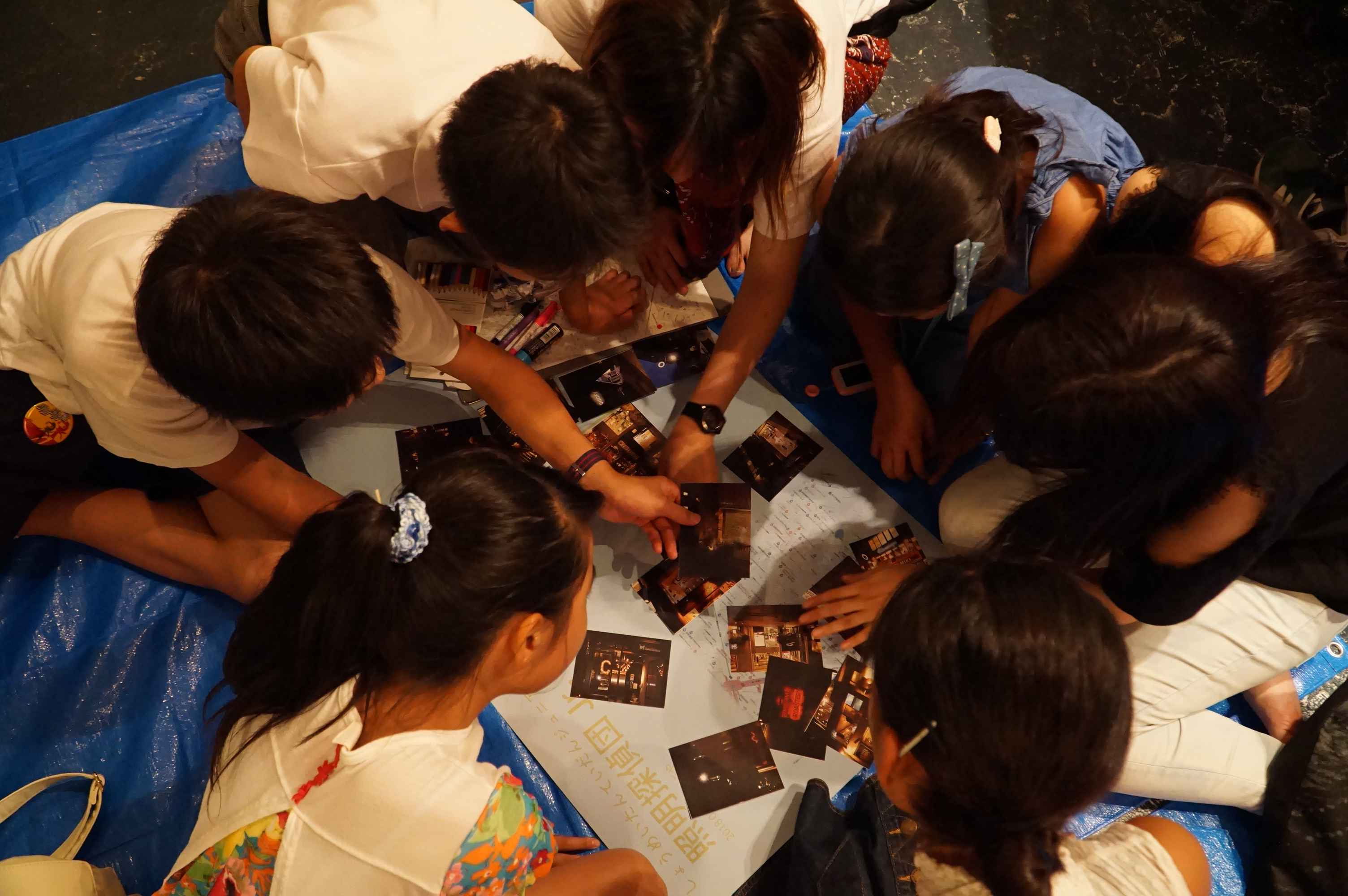 Divided into teams to create the posters
Divided into teams to create the posters
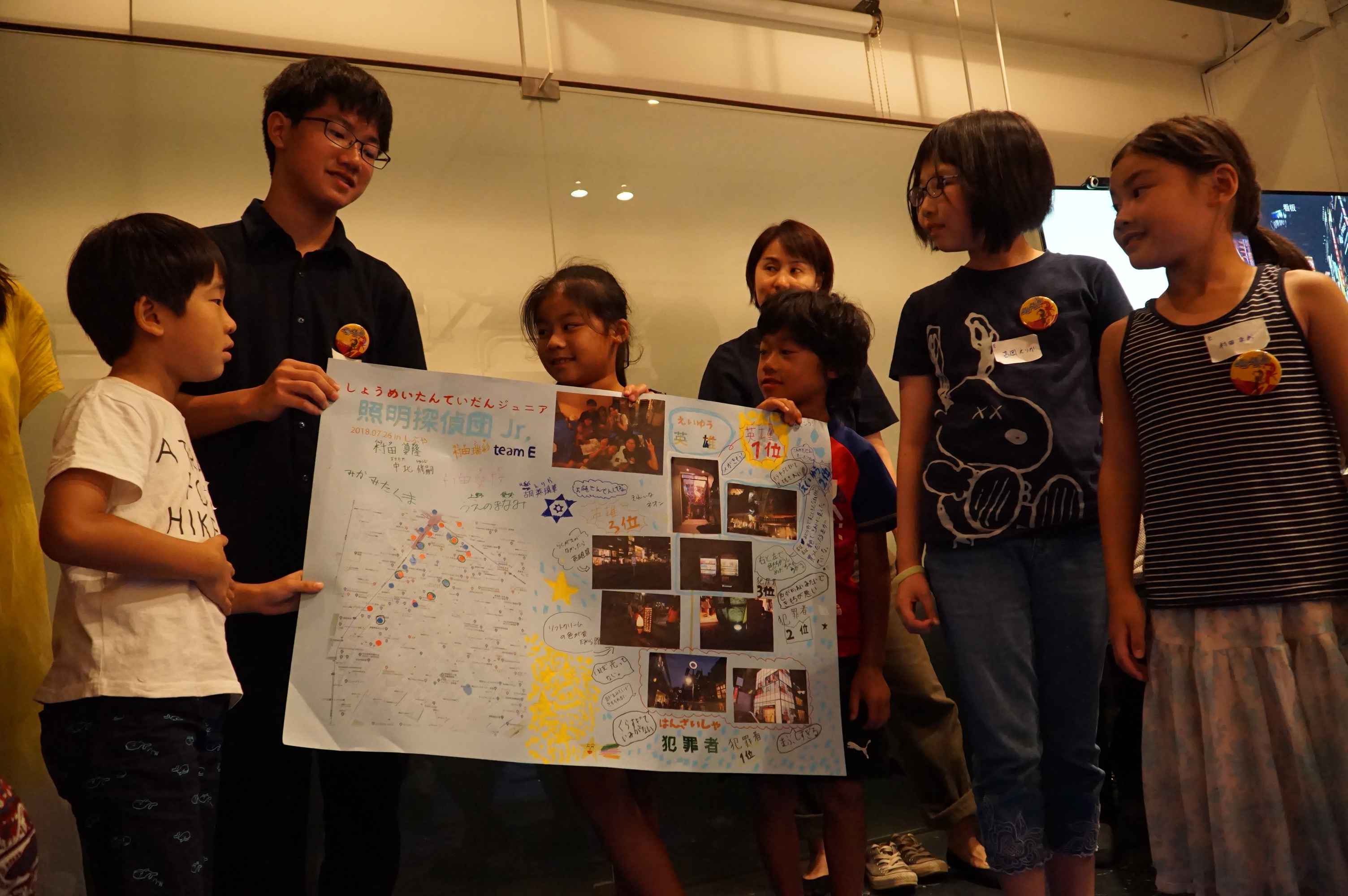 A presentation summarizing the Night Walk Survey using the posters they created
A presentation summarizing the Night Walk Survey using the posters they created
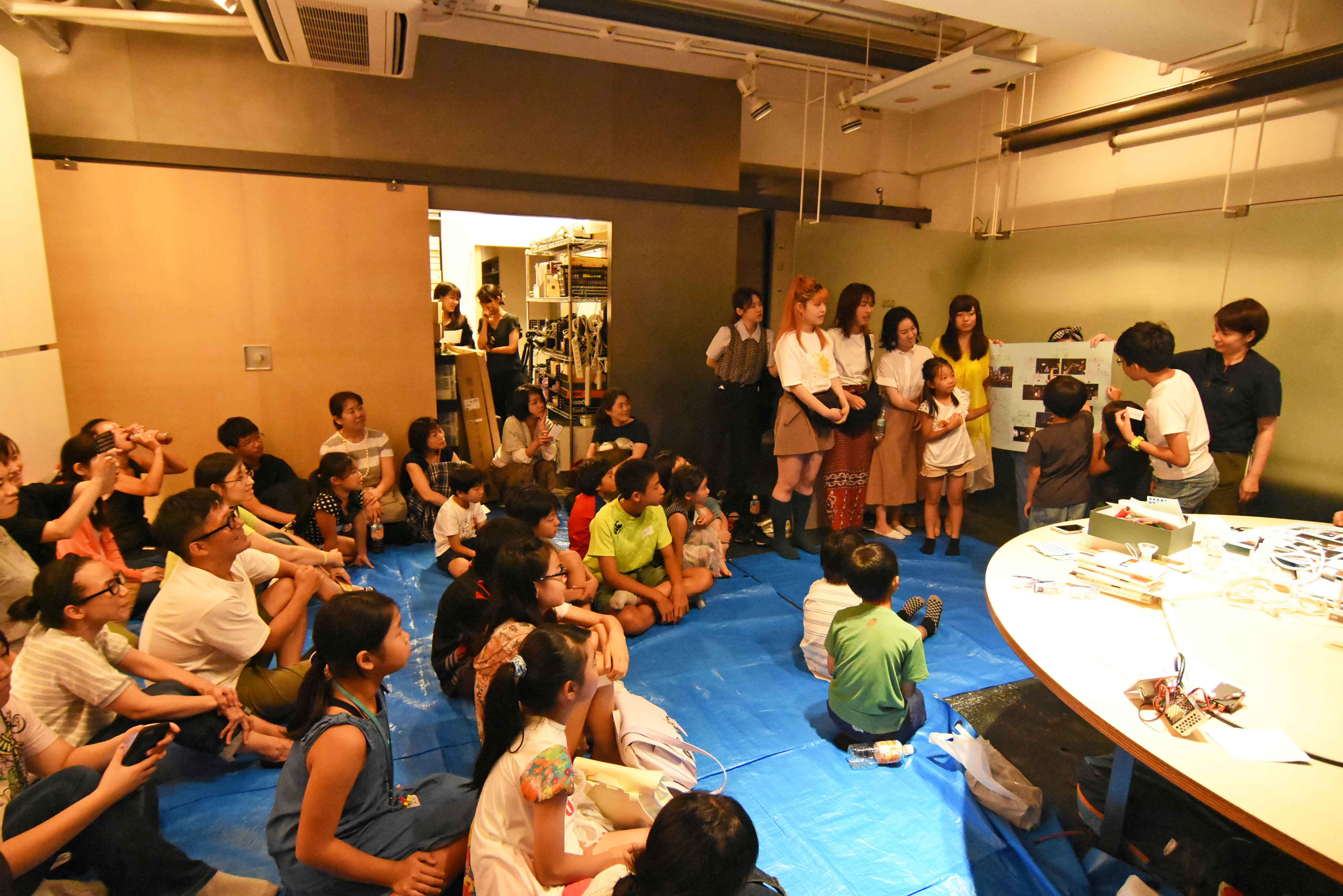 The children paying attention to the opinions of the other groups
The children paying attention to the opinions of the other groups





